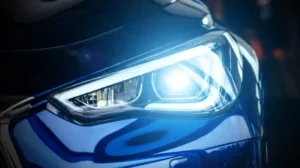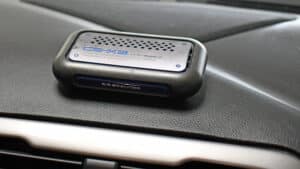Electric vehicles are automobiles powered by electricity. They are environmental friendly and consumer oriented as zero tailpipe emissions reduce greenhouse gas generation, fuel costs & maintenance. Also it promotes less noise pollution with safe ride experience for consumers. Nevertheless, EV deployment still has some major challenges to tackle namely the initial high purchase price cost of ownership (CO2), short driving range and insufficient charging infrastructure. These barriers may discourage potential buyers from transitioning to EVs or lead existing owners’ discomfort and worry.
Tesla, one of the largest EV producers and innovators recognize these challenges and work on new solutions to overcome them all day long. The main field Tesla is concentrating on includes charging technology, which plays a significant role in the functionality, dependability and comfort of EVs. Tesla has recently unveiled or introduced various new charging technologies that seek to enhance the EV drivers’ convenience while recharging. These include wireless charging, ultra-fast charging and open network service. In this paper, we will discuss how these new charging technologies function, what their pros and cons are for the electric vehicle market and drivers.
Wireless Charging
Wireless charging is an innovation through which EVs not require a cable or socket to charge their batteries. It operates using electromagnetic induction whereby the energy is transferred from a transmitter pad on ground to a receiver pad attached on vehicle. Energy is then the converted into electricity and stored in battery. Wireless charging removes the necessity for physical contact between charger and automobile that can lead to less abrasion, maintenance issues as well as safety dangers. It also eliminates the need for EV drivers to find a plug, connect with cable and/or unplug after charging.
Telsa is attempting to create a wireless home charging solution that will allow EV owners charge their cars overnight, at the place of work or any spot where they park for long period. Franz von Holzhausen, Tesla’s chief designer, noted that the company is working on inductive charging and that it will become available soon. Tesla has also bought off an autonomous vehicle charging company from Germany, Wiferion implying that wireless charging could be embedded in its self-driving vehicles.
Ultra-Fast Charging
However, a high-speed or ultra-fast charging is an advanced technology that allows charged EVs to be recharged within seconds and fifteen minutes at most. It works through the supply of high power energy more than 150 kW to vehicle battery. An efficient method to maximize EVs’ performance is ultra-fast charging that extends their range and minimizes the anxiety regarding running out of charge. It can also empower EV drivers to take long trips, schedule their journeys or respond during emergencies.
Tesla has adopted its Supercharger network as a fast charging service for the customers. In Tesla,Superchargers has a power of 250 kW that can charge the Model3 from1o%to8oo in less than twenty minutes. The Supercharger network of Tesla is more than 25,0 in the world to major highways and destinations. It is also anticipated that Tesla will expand its Supercharger network and increase the power output by 350 kW+ in forthcoming years.
Although ultra-fast charging has advantages, it also faces tall odds. A critical issue is battery aging which means the loss of capacity and performance by a battery over time or with use. Ultra-high charging can lead to battery deterioration, particularly if cooling is not considered. Grid stability is yet another problem, which means the ability of the grid to deal with fluctuations in demand from ultra-fast chargers. Voltage fluctuations, frequency deviations or power outages may arise with ultra-fast charging if it is not integrated in the grid properly. A final issue is demand management, which describes the way in which charging demand can be distributed and organized or induced. Ultra-fast charging can lead to congestion, queues or conflicts particularly if the supply of this charging is limited, unevenly distributed and pricey.
In various ways, ultra-fast charging can be advantageous to EV drivers. For instance, ultra-fast charging can speed up and simplify the process of recharging as EV drivers do not need to spend much time or search for a slow charger. Ultra-high speed charging can also make EV range anxiety go away, as drivers do not have to be afraid about their battery level or available connectors. Fast Charging may also make charging more fun and thrilling because EV drivers can enjoy the dynamics of their cars.
Open Network Charging
Open-architecture charging is a technology that facilitates interoperability between EVs and all types of public chargers, regardless of their brand or proprietary network. It works through the application of a similar connector, payment system and data protection guarantee. Multifunctional chargers can be provided accessibility using open networking charging to increase its coverage, interoperability and rivalry. It may also enable EV drivers to find, pay and shift charging.
After these newly declared standards by the Biden administration, Tesla is now letting its charging open to any EV in US. By the end of 2024, Tesla seeks to have about 7. Tesla will also use the Combined Charging System (CCS) standard, which is a widespread connector type in several countries of the world. Tesla will allow any EV driver to download its app or log onto the site and use chargers it has.
Open network charging is characterized by several benefits and challenges. The main challenge in this field is interoperability, which involves how well EVs and chargers can ‘talk’ to one another. The technical, operational and commercial aspects of charging have to be harmonized for open network charging such as voltage current protocol interface and tariff. Another issue is the pricing, which means how much EV drivers need to pay for charging and whether or not companies are able to charge a reasonable price. Open network charging requires the price structure, mechanism and disclosure regulation; namely cost fee tax as well as subsidy.
Customer loyalty is the third challenge and it pertains to how loyal drivers of EV are to their preferred brand, model or network. Differentiating value proposition or service quality in open-network charging may include features, benefits, and rewards.
A number of benefits can be attributed to open network charging. For instance, open network charging can improve accessibility and ubiquity since EV drivers would be able to use any charger without the brand model or charge themed. Open network charging may also lead to a homogenization of the process, with all EV owners getting familiar and comfortable with specific connector types, payment methods as well as data privacy measures. Open network charging can also create more competitive and dynamic conditions in which drivers of EVs are able to compare different stations and make the most convenient choice.
Conclusion
The new technologies of Tesla like wireless charging, high-speed charging and open network charging, will help in the EV market by increasing the convenience, and therefore affordability and accessibility for EV drivers. These technologies will solve some of the major problems with the adoption of EVs including; expensive cost, limited range, lack of charging infrastructures among others. In addition to that, they will also be beneficial to electric vehicle owners by enabling them to save time while driving their cars from one point to another; increase their travelling distance by few kilometers before refilling petrol; and also freely switch between different battery chargers. With this new model of chargers Tesla aims at improving the service delivery of electric cars since these improved systems are expected to promote the electric car industry and contribute to a green-energy future as well.






